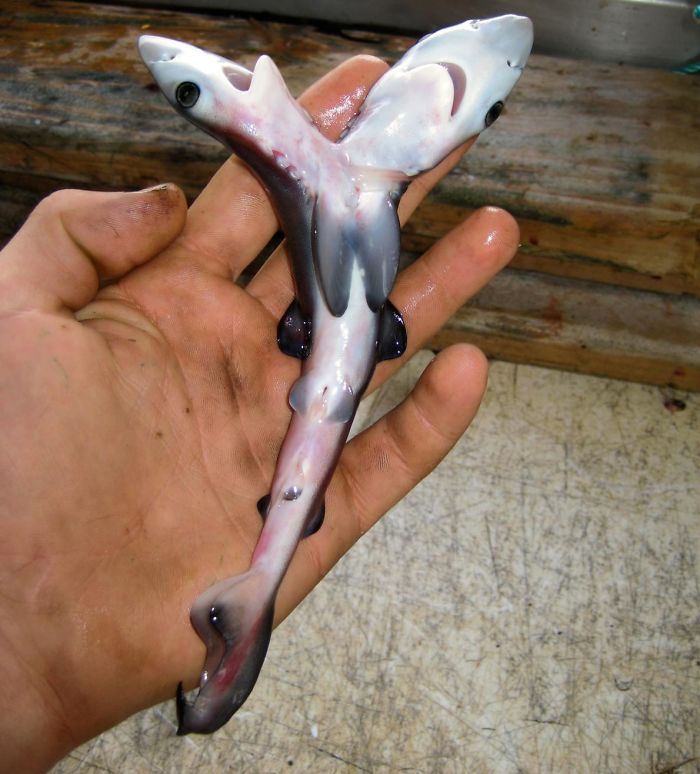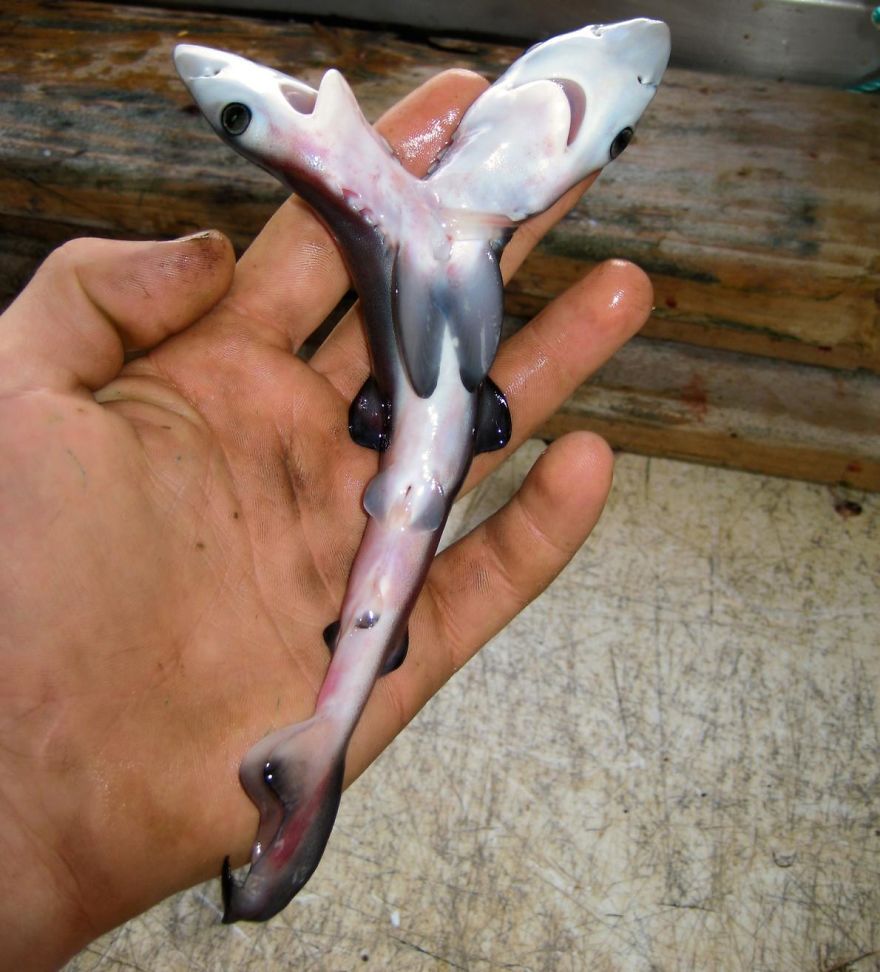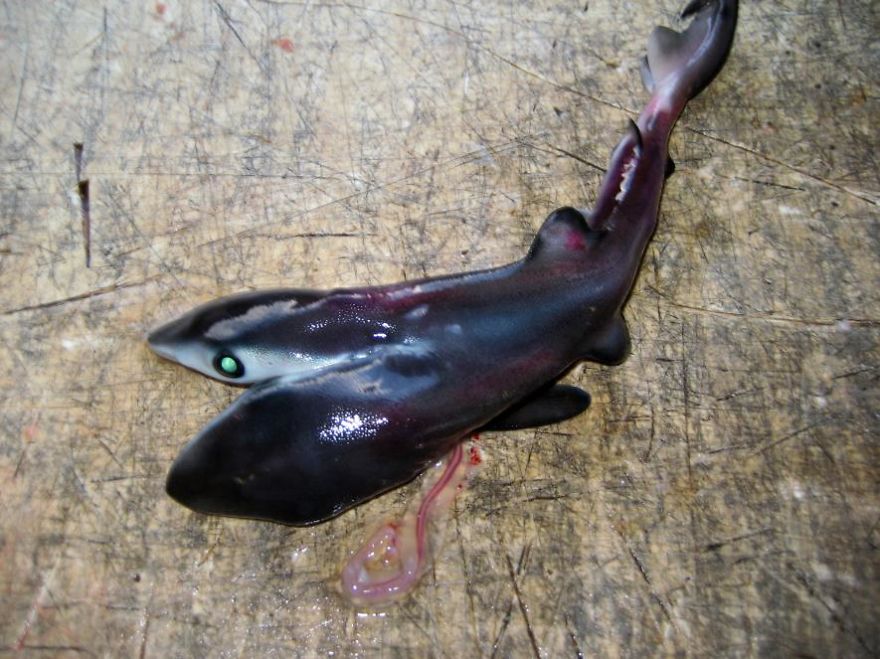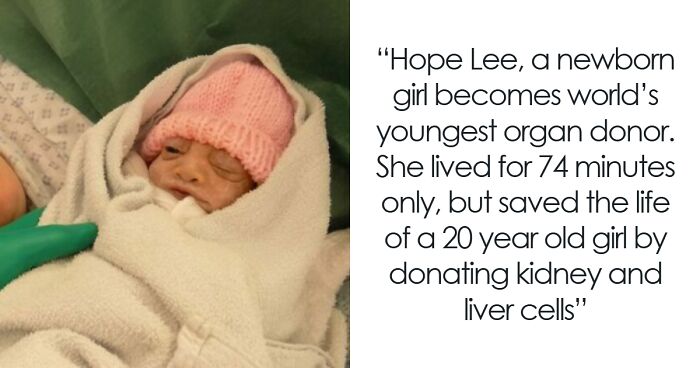Two-headed sharks may sound like a figment of the big screen, but they exist—and more are turning up worldwide, scientists say.
A few years ago off Florida, fishermen hauled in a bull shark whose uterus contained a two-headed fetus. In 2008, another fisherman discovered a two-headed blue shark embryo in the Indian Ocean.
And a 2011 study described conjoined twins discovered in blue sharks caught in the Gulf of California and northwestern Mexico. Blue sharks have produced the most recorded two-headed embryos because they carry so many babies—up to 50 at at time, says study leader Felipe Galván-Magaña, of the National Polytechnic Institute in Mexico.
Now, Spanish researchers have identified an embryo of an Atlantic sawtail catshark with two heads, according to a new study in the Journal of Fish Biology. While raising sharks for human-health research in the laboratory, a team noticed the unusual embryo in a see-through shark egg.
The catshark embyro was not your average two-headed beast—it’s the first such specimen known from an oviparous shark species, or a shark that lays eggs.
Researchers opened the egg to study the specimen, and study leader Valentín Sans-Coma says it’s unknown whether the deformed animal would have survived. Because it’s the first such conjoined twin found in egg-laying sharks, its likely that such offspring don’t live long enough for people to find them.
MUTATION CAUSES
Two-headed sharks have been few and far between, so it’s tough to know what’s behind the mutations. (See more shark pictures.)
Sans-Coma and colleagues say a genetic disorder seems to be the most plausible cause for the two-headed catshark, since the embryos were grown in a lab among nearly 800 specimens. To the best of their knowledge, the eggs were not exposed to any infections, chemicals, or radiation.
But wild sharks’ malformations could come from a variety of factors, including viral infections, metabolic disorders, pollution, or a dwindling gene pool due to overfishing, which leads to inbreeding, and thus genetic abnormalities. (See “New Diseases, Toxins Harming Marine Life.”)
Source: http://news.nationalgeographic.com/
More info: news.nationalgeographic.com
Two-headed blue sharks are more common because the females have a lot of eggs—and thus more opportunity for abnormalities.
Two-headed blue sharks are more common because the females have a lot of eggs—and thus more opportunity for abnormalities.
182views
Share on Facebook
 Dark Mode
Dark Mode 

 No fees, cancel anytime
No fees, cancel anytime 






























4
0